Gardening is a journey that begins with the earth beneath your feet, and whether you’re a novice planter or a seasoned horticulturist, understanding garden soil is a fundamental step. Every thriving garden owes its success to the rich, vibrant medium in which seeds take root and flourish, making the choice of soil a crucial decision in your gardening endeavors.
In this article, we will demystify the nuances of selecting the right garden soil to set your plants up for success. You’ll discover how different soil types can impact plant health, and learn practical tips on how to amend and improve your garden’s foundation for optimal growth.
From understanding the composition of loamy, sandy, and clay soils to exploring the benefits of organic matter, our guide aims to equip you with the knowledge to make informed choices. We invite you to dive into this earthy topic and transform your garden into a flourishing oasis, one scoop of soil at a time.
Understanding Garden Soil Basics
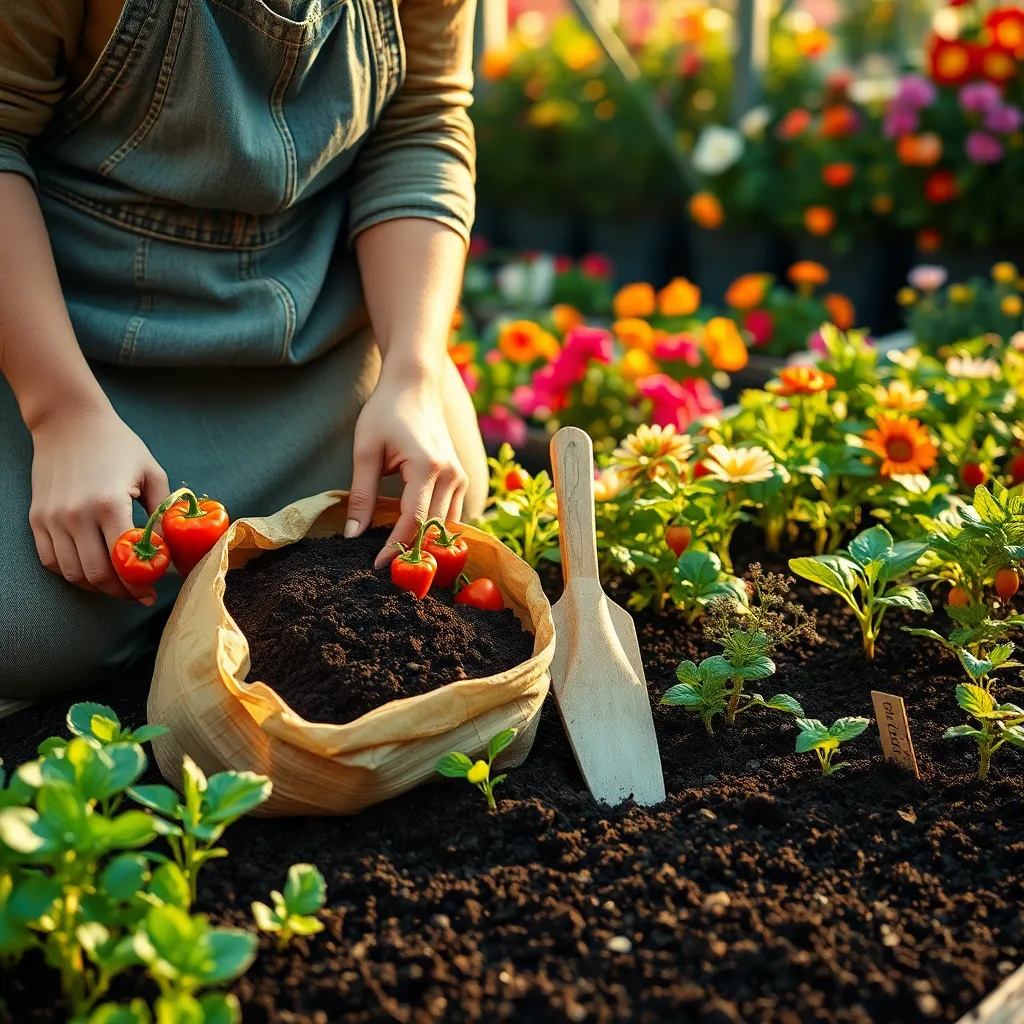
Understanding the basics of garden soil is crucial for any gardener aiming for a thriving garden. Healthy soil acts as the foundation for plant growth, providing essential nutrients, air, and water to your plants.
Start by identifying your soil type, which could be sandy, clay, silt, or loamy. Loamy soil is often considered ideal because it retains moisture well while providing excellent drainage and nutrient availability.
To improve your soil’s quality, consider adding organic matter like compost or well-rotted manure. These amendments enhance soil structure, improve water retention, and boost fertility, making them valuable for any gardening project.
Regularly test your soil’s pH level to ensure it matches the needs of the plants you intend to grow. Most garden plants thrive in slightly acidic to neutral soil, with a pH of 6.0 to 7.0.
For advanced gardeners, consider incorporating cover crops or green manures, which can naturally enrich soil over time. These living plants can fix nitrogen, suppress weeds, and reduce erosion, offering long-term benefits to your garden.
Factors Influencing Soil Choice
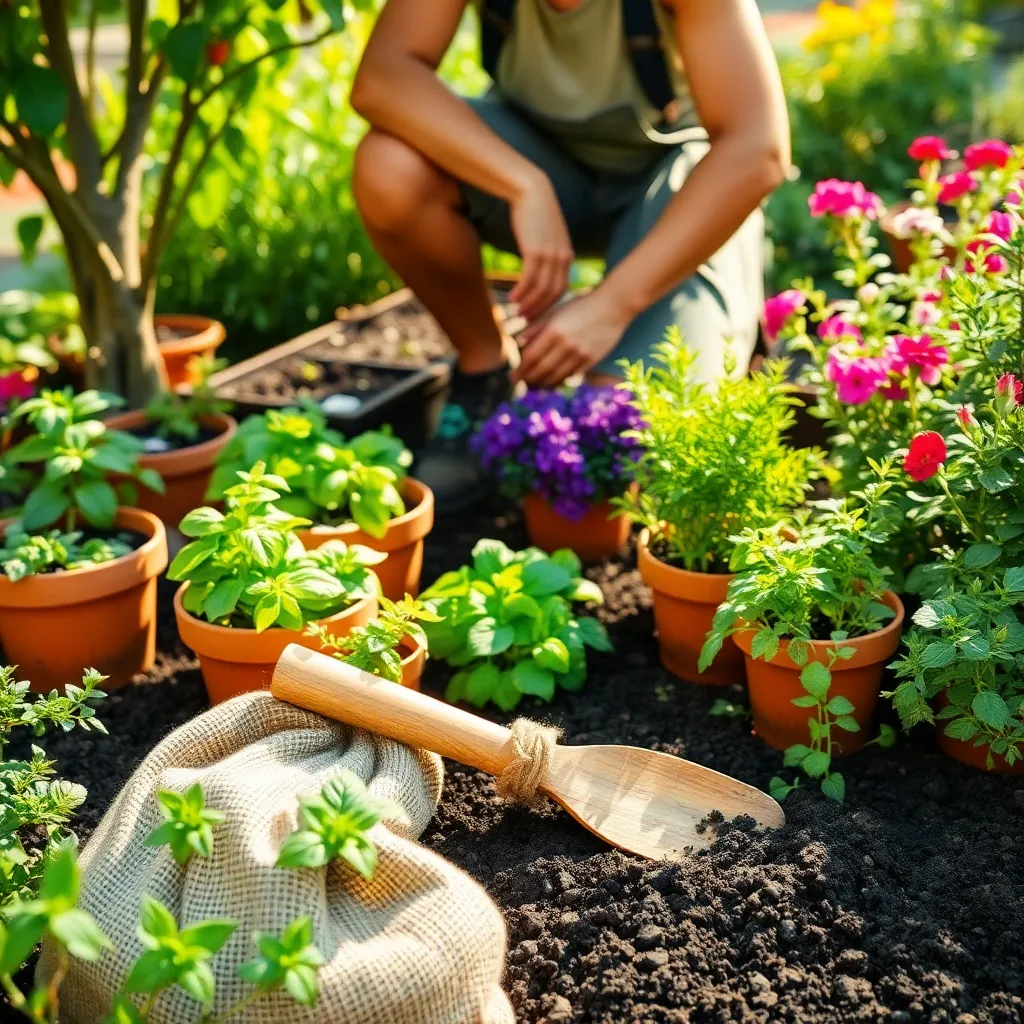
When choosing garden soil, it’s essential to consider the specific needs of the plants you intend to grow. Different plants thrive in different soil types, so understanding these requirements is key to gardening success.
One critical factor is the soil’s texture, which affects water retention and drainage. Sandy soils drain quickly but may require more frequent watering, while clay soils retain moisture but can lead to root rot if not managed properly.
Another important consideration is the soil’s nutrient content. You can enhance soil fertility by incorporating organic matter like compost, which improves both nutrient levels and soil structure.
For gardeners looking to grow vegetables, a loamy soil with a balanced mix of sand, silt, and clay offers an ideal environment. This type of soil typically provides good drainage and retains nutrients well, supporting healthy plant growth.
Advanced gardeners might experiment with adjusting soil pH to meet the needs of specific plants. For example, blueberries flourish in more acidic soil, so amending with sulfur or pine needles might be beneficial.
To maintain optimal growing conditions, regularly test your soil’s pH and nutrient levels. This allows you to make informed decisions about fertilization and soil amendments, ensuring your garden thrives.
Identifying Soil Types and Uses
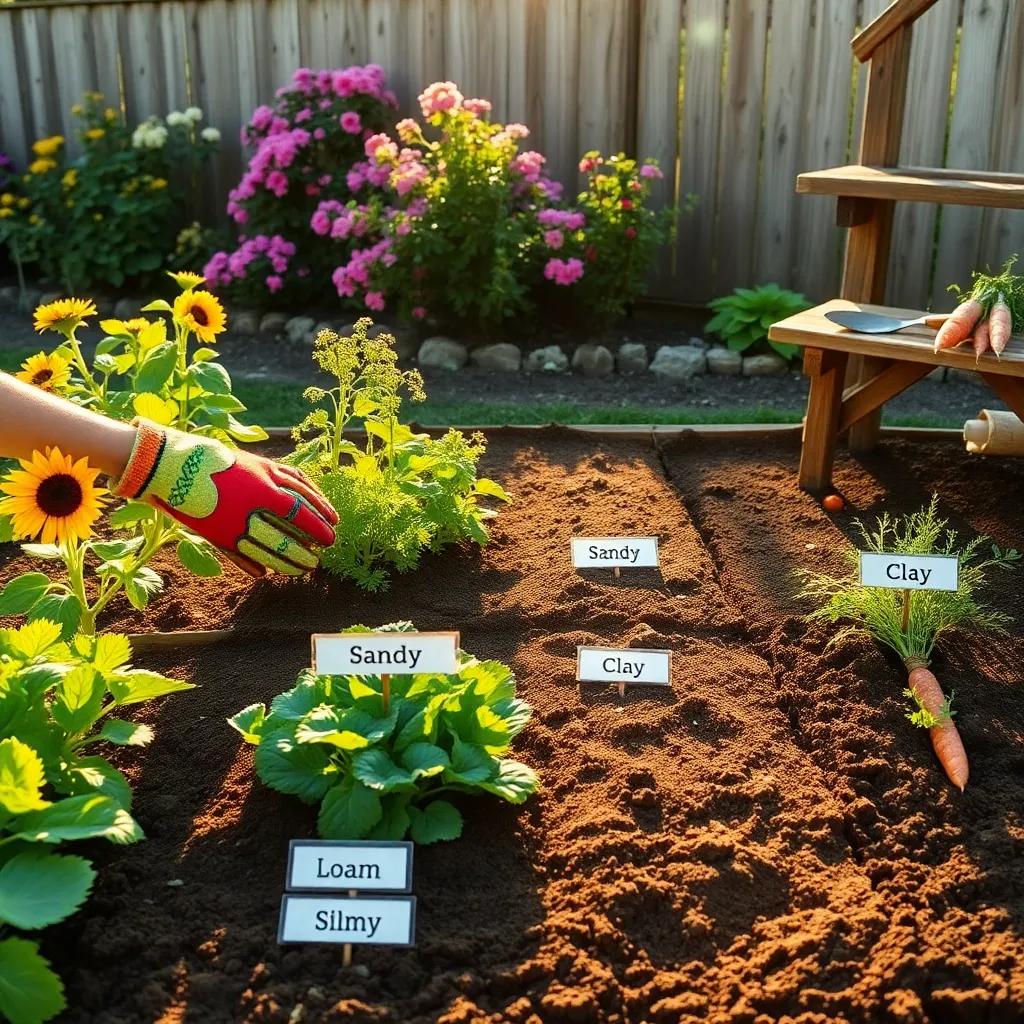
Understanding your soil type is crucial for gardening success, as it directly impacts plant growth and health. Common soil types include sandy, clay, silt, loam, and peat, each offering unique benefits and challenges.
Sandy soil drains quickly, making it ideal for plants that prefer dry conditions, such as succulents and lavender. To improve sandy soil, consider adding organic matter like compost, which helps retain moisture and nutrients.
Clay soil retains water well, but it can become compacted, hindering root growth. To enhance clay soil, incorporate coarse sand or gypsum to improve drainage and aeration, allowing roots to expand more easily.
Loam soil is often considered the best for gardening because it balances drainage and nutrient retention. It is perfect for a wide range of plants, including vegetables, fruits, and flowers, offering both novice and experienced gardeners a versatile growing medium.
For those with peat soil, known for its high acidity and water retention, it’s excellent for acid-loving plants like blueberries and azaleas. To reduce acidity, you might add lime, but be cautious as it can alter the soil’s natural properties.
Identifying your soil type can be done with a simple squeeze test: take a handful of moist soil and squeeze it in your hand. Sandy soil will fall apart, clay will hold its shape, and loam will feel crumbly yet cohesive, guiding you towards the best amendments for your garden.
Testing Soil for Optimal Growth
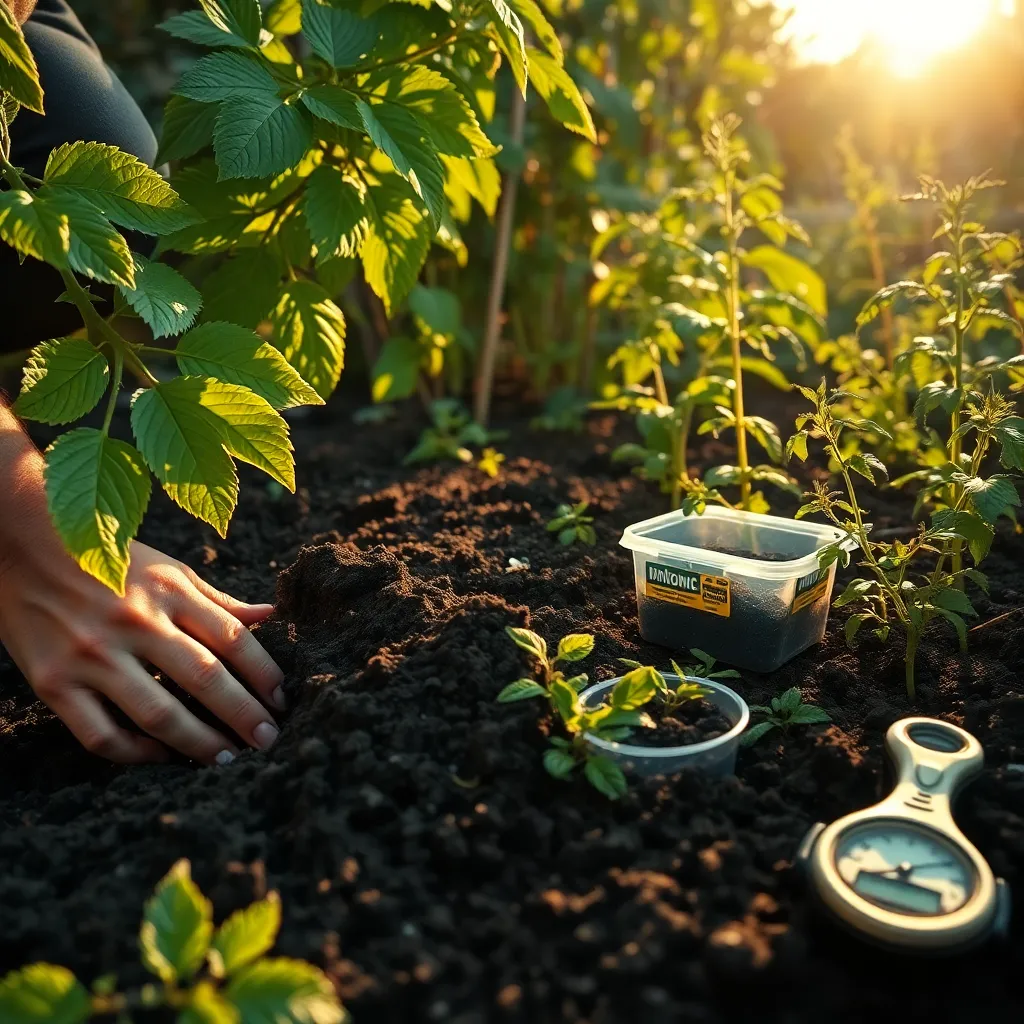
Testing your soil is a crucial step in optimizing plant growth and ensuring your garden thrives. Begin by purchasing a simple soil test kit from a gardening store, which will help you assess key elements like pH, nitrogen, phosphorus, and potassium levels.
Understanding soil pH is essential because it affects nutrient availability to plants. Most vegetables and flowers thrive in slightly acidic to neutral soils, typically with a pH between 6.0 and 7.0.
After testing, you may find your soil needs amendments to reach the desired pH range. To increase acidity, consider adding sphagnum peat, elemental sulfur, or ammonium sulfate; to lower acidity, incorporate lime or wood ash.
Once you’ve adjusted the pH, focus on nutrient levels by using balanced fertilizers tailored to your soil’s needs. Organic options such as compost can enhance soil structure and fertility, supporting healthy root development and plant growth.
For gardeners with experience, consider the benefits of specific amendments like bone meal for phosphorus or blood meal for nitrogen. Regular testing and adjustment ensure that your soil remains a hospitable environment for your plants year-round.
Improving and Amending Garden Soil
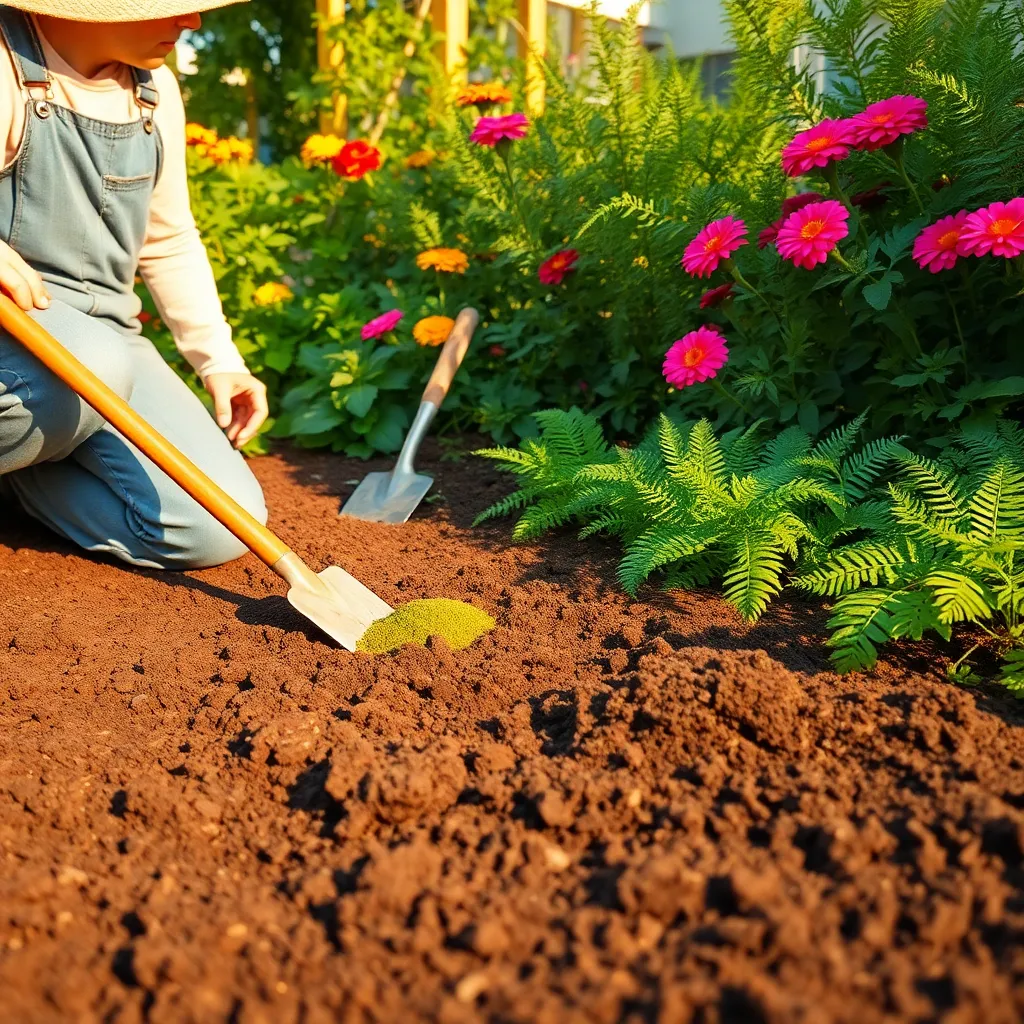
To improve and amend garden soil, start by assessing the current condition of your soil. Knowing whether it is sandy, clayey, or loamy will help you choose the right amendments to enhance its fertility and structure.
Incorporating organic matter is a universally effective way to enhance soil quality. Use materials like compost, aged manure, or leaf mold, which can improve soil texture, boost nutrient levels, and enhance moisture retention.
For those with sandy soils, adding organic matter is particularly beneficial as it increases the soil’s ability to hold water and nutrients. Clay soils, on the other hand, benefit from organic amendments that help break up compaction and improve drainage.
Advanced gardeners might consider adding specific minerals to balance soil pH levels. Gypsum can be beneficial for clay soils, as it helps to improve structure without altering the pH, while lime is useful for acidic soils to raise the pH.
Finally, mulch your garden beds with organic materials to further enrich the soil and suppress weeds. Options like straw, wood chips, or shredded leaves not only protect the soil surface but also decompose over time to feed the soil.
Conclusion: Growing Success with These Plants
As we wrap up our exploration of nurturing relationships through the metaphor of choosing the right “garden soil,” let’s revisit the five key concepts we’ve cultivated. First, understanding your partner’s needs is akin to knowing the soil type that best suits your plants. Second, regular communication acts like the essential nutrients that ensure growth. Third, trust is comparable to the sunlight that fosters a healthy relationship. Fourth, resolving conflicts effectively mirrors weeding out issues that hinder development. Lastly, shared goals are the water that sustains your relationship garden.
To put these insights into practice, take a moment today to have a heartfelt conversation with your partner about your shared goals and dreams. This simple action can strengthen your bond and nurture mutual understanding.
Remember, relationships thrive with ongoing care and attention, just like a well-tended garden. Save or bookmark this article as a handy guide to revisit and reinforce these principles whenever needed. With commitment and patience, you are sowing seeds for a flourishing relationship that stands the test of time. Here’s to your journey of growth and success together!


